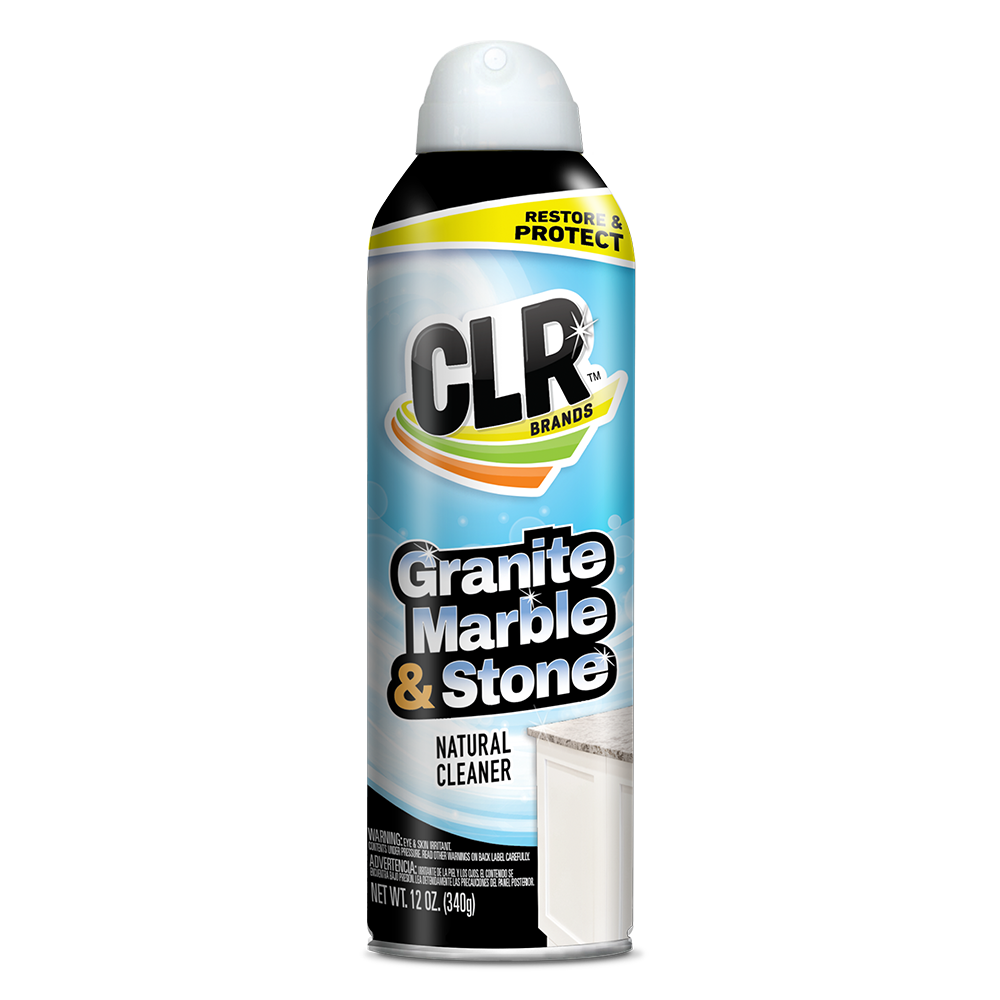
Granite, Marble, and Stone
- Specially formulated to clean and protect against spills, food and grime on a wide variety of hard surfaces including natural stones, marble, Corian® and tile.
- Cleans and protects in one step, while restoring and maintaining the luster of the surface and provides a streak-free shine.
- To keep your stone surfaces well maintained, do not use abrasive cleaners on stone surface. Blot up spills immediately. Do not allow juices, wine, vinegar, or other acidic liquids to linger on the stone surface.
Look for Granite, Marble, and Stone in this size
- 12 oz. aerosol can
For use on these surfaces
- Corian
- Granite
- Marble
- Tile
More information
How to use this product
- Shake well before each application.
- Hold can 6 inches from surface and spray lightly.
- Wipe surface with a clean, dry cloth or paper towel, turning occasionally.
For hard to reach surfaces, spray product directly onto cloth and wipe. Heavily soiled surfaces should be wiped off prior to using Granite, Marble, and Stone.
Product ingredients

| Water | Dilutent: CAS #7732-18-5 |
|
|
| Dilutent: CAS #7732-18-5. Reverse Osmosis (RO) is a water treatment process that removes contaminants from water by passing the water through a membrane, (filter), where contaminants are filtered out yielding more pure quality water. | |||
| Propylene Glycol Propyl Ether | Solvent: CAS #1569-01-3. |
|
|
| Solvent: CAS #1569-01-3. | |||
| Butane | Propellant: CAS #106-97-8. |
|
|
|
Propellant: CAS #106-97-8. A compound of hydrogen and carbon, which is a component of natural gas. Commonly used as a propellant in aerosol dispensors to impart motion to another substance. California CPRKA Designated Lists (2) EU CMRs. https://echa.europa.eu/documents/10162/13562/cmr_report_en.pdf |
|||
| Propane | Propellant: CAS #74-98-6. |
|
|
|
Propellant: CAS #74-98-6. A compound of hydrogen and carbon, which is a component of natural gas. Commonly used as a propellant in aerosol dispensors to impart motion to another substance. California CPRKA Designated Lists (12) US NTP Reproductive or Developmental Toxicants. https://ntp.niehs.nih.gov/publications/monographs/index.html |
|||
| Silica Dimethicone Silylate | Surfactant: CAS #84133-50-6. |
|
|
| Surfactant: CAS #84133-50-6. | |||
| Sodium Nitrite | Corrosion Inhibitor: CAS # 7632-00-0. |
|
|
|
Corrosion Inhibitor: CAS # 7632-00-0. It can be used as an additive in industrial greases, as an aqueous solution in closed loop cooling systems, and in a molten state as a heat transfer medium. It is also a common food preservative. Please see specific disclosure information provided by the formulator/manufacturer: EU Fragrance Allergens |
|||
| Fragrance | Fragrance Component: Trade Secret |
|
|
| Fragrance Component: Trade Secret. A more environmentally responsible proprietary fragrance made in accordance with current natural and organic global regulations. See https://ifrafragrance.org/ to learn more. | |||
| Tetrasodium EDTA | Chelating Agent: CAS #64-02-8. |
|
|
| Chelating Agent: CAS #64-02-8. | |||
| Chelating Agent | Chelating Agent: CAS #TradeSecretChelatingAgent. |
|
|
| Chelating Agent: CAS #TradeSecretChelatingAgent. | |||
| PEG-115M | Solvent: CAS #25322-68-3. |
|
|
| Solvent: CAS #25322-68-3. | |||
| Myrcene | Fragrance Component: CAS #123-35-3 |
|
|
|
Fragrance Component: CAS #123-35-3. California CPRKA Designated Lists (1) California Proposition 65. https://oehha.ca.gov/proposition-65/proposition-65-list (9) IARC Carcinogens. https://monographs.iarc.fr/agents-classified-by-the-iarc/ |
|||
